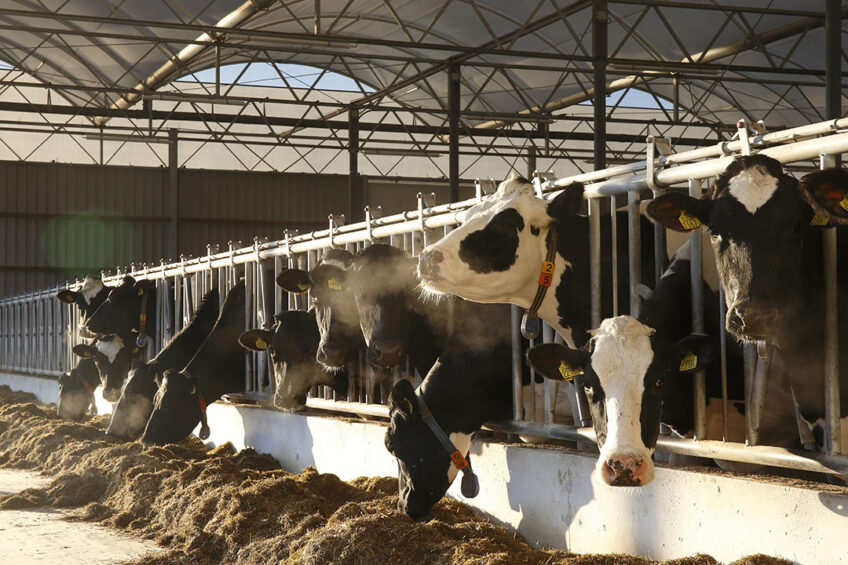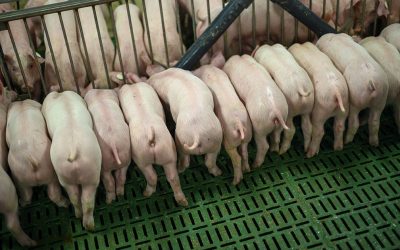Liquid feed: US markets and ingredient availability

Liquid ingredients continue to be important in feed for beef and dairy cattle in the US and elsewhere, and in some areas for swine as well. And whilst market fluctuations in availability and price are nothing new, some new developments are afoot as we approach the start of 2023.
In September, the American Feed Industry Association held its 51st annual Liquid Feed Symposium in New Orleans, where attendees gathered to hear the latest market forecasts and discuss the ways this unique industry segment factors into cattle producers’ sustainability objectives.
Optimism in the face of challenges
Dr Paul Davis, AFIA’s director of quality, animal food safety and education, noted that liquid feed manufacturers in the US are facing quite a few challenges right now, from inflation, ingredient availability and trucking issues to labour shortages and extended periods of drought – yet there is still a sense of optimism across the industry.
Symposium topics included how the Russia-Ukraine war is impacting global agricultural commodity markets, long-term challenges with maintaining a stable trucking system and sustainability – how tracking and reporting environmental data will be increasingly important for downstream customers.
Liquid Feed Facility of the Year award
Apart from the educational sessions, the ‘2022 Liquid Feed Facility of the Year’ award was given to Quality Liquid Feeds plant in Comstock Park, Michigan. According to Gary Huddleston, AFIA’s director of feed manufacturing and regulatory affairs, this plant “employs well-documented standard operating procedures and training programs that should be revered. Their work has led to experienced and engaged employees who play a critical role in ensuring the safe manufacture of quality liquid feed for beef and dairy producers.”
The AFIA Liquid Feed Committee also hosted a live auction which raised over $17,000 USD to support the Kenny Berg Research and Education Fund, which in turn supports liquid feed research projects at agricultural universities.
Liquid ingredients for cattle
Dr Alfredo DiCostanzo, Beef Systems Extension Educator at the University of Nebraska-Lincoln, presented on ‘Attitudes About Incorporating Liquid Feeds in Cattle Diets.’
He notes that in the US, there are 11 million beef cattle in feedlots currently in the US and another 15 million growing beef cattle. In the US dairy herd there are 8 million lactating cows, 2 million dry and 9 million growing.
Drought in recent years has generally affected 15 million cows every year. “Corn or corn co-products do not reach these cattle,” DiConstanzo notes. “Can liquid supplements reach them? Looking at molasses, it is worthwhile shipping it to areas of drought due to its high nutritional value. At 4 to 6 lb inclusion in the diet, molasses delivers 2 to 3 lb of energy and up to 1.5 lb protein.”
Liquid supplements improve performance
In terms of the factors that determine which liquid supplements that beef or dairy farmers try to use, DiConstanzo lists the equipment they have on hand, their ingredient handling capacity, history of use, how much cattle they have on feed versus grazing, price, nutrient composition of the supplements and the composition of the diets already in place.
“In a survey I conducted, 63% of respondents listed lack of education about supplementation with liquid feed ingredients as a barrier to use,” he notes. “The same number of respondents also listed a lack of history and experience, farm traditions you could call them, as another barrier.”
If there is an interest in a farm in using liquid supplements, DiConstanzo therefore promotes education and particularly targeting younger operators. They should tour facilities that actively use liquid supplements. “They need to understand the value proposition and be presented with research findings,” he says. “Liquid supplements improve performance.”
Supply for many liquid feed ingredients is inelastic and some ingredients that were discounted now attract a premium.
A look at ingredient markets
John Cropley, senior commodity analyst at ED&F Man Liquid Products, presented a liquid ingredient forecast at the Symposium, and explained that understanding end uses for raw materials is key.
He noted that the US feed industry used to have ‘the first right of refusal’ for many ingredients such as molasses, whey and glycerin, but now, demand for these materials from non-feed sectors is growing. “Supply for many liquid feed ingredients is inelastic and some ingredients that were discounted now attract a premium,” says Cropley. “In particular, the renewable energy sector is able to pay more than most cattle producers.”
Molasses importance
Molasses continues to form the backbone of most liquid feed formulations. For every 2 tons of domestically-produced molasses sold in the USA, another ton must be imported. Therefore developments overseas play a key role in determining market conditions in the US.
Rising energy costs, along with the widening premiums attached to ethanol produced from sugarcane is intensifying competition for offshore supplies of molasses traditionally destined for the US.
Specifically, there is strong global demand from the energy sector for molasses from beet and sugarcane processing to be manufactured into ethanol. “Domestically, sugarcane production has been broadly available over the last few years, but may decrease as acreage is contracting in Texas,” says Cropley. “There are some constraints on beet production, mainly being the need for irrigation, energy costs (for processing) and desugarisation. With desugarisation, molasses is further processed to extract more sugar. This reduces the supply of molasses coming out of beet factories.”
Corn for ethanol
Cropley adds that dry milling and fermentation of corn for ethanol, which produces a liquid by-product called condensed corn distillers solubles (CCDS) that contains spent yeast cells and other nutrients, is back to near-record levels. About 11.5 million tons of corn a month is processed resulting in about 3mn tons (dry basis) of co-products. Only a small proportion (100k tons, wet basis) is distillers’ solubles.
However, CCDS is a relatively important ingredient because it does not face competition from non-feed sectors – (the competition comes from ethanol processors that decide to put the solubles back on distillers’ grains).
Cropley explains that only crude glycerin/glycerol is used in feed applications. “It is not used as a replacement for corn, rather it can be used to partially substitute (but mainly complement) molasses in liquid feed formulations,” he says. “The shift from biodiesel to renewable diesel production in the USA is reducing the supply of crude glycerin reaching the market.”
Changes continue
Looking at other liquid ingredients, whey availability from dairy processing is growing as US cheese production keeps increasing. However, as a very low dry matter commodity, the area over which whey can be transported is limited, especially when trucking is such a challenge.
“The point I made at the Symposium is that the liquid feed industry in general and Westway in particular (the largest global feed company) are no strangers to change,” says Cropley. “We anticipate these changes and adjust accordingly. So, for example, although desugarization reduces the supply of beet molasses, it increases the output of CSB (condensed separator by-product) which will find its way into feed formulations.”
“Similarly, the growing use of cane molasses, both for rum and for fuel ethanol, has increased the output of CMS (condensed molasses solubles) which is similarly used in liquid feeds,” he says. “A key value proposition of the liquid feed industry has always been that we upcycle by-products. Today and tomorrow, we will increasingly be doing so with the by-products of by-products.”








